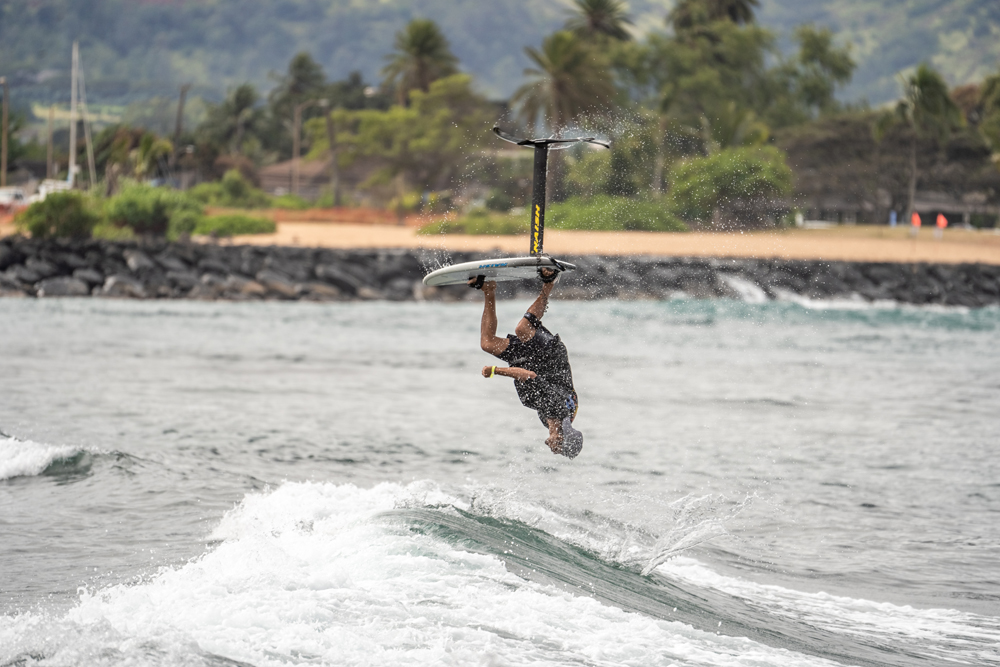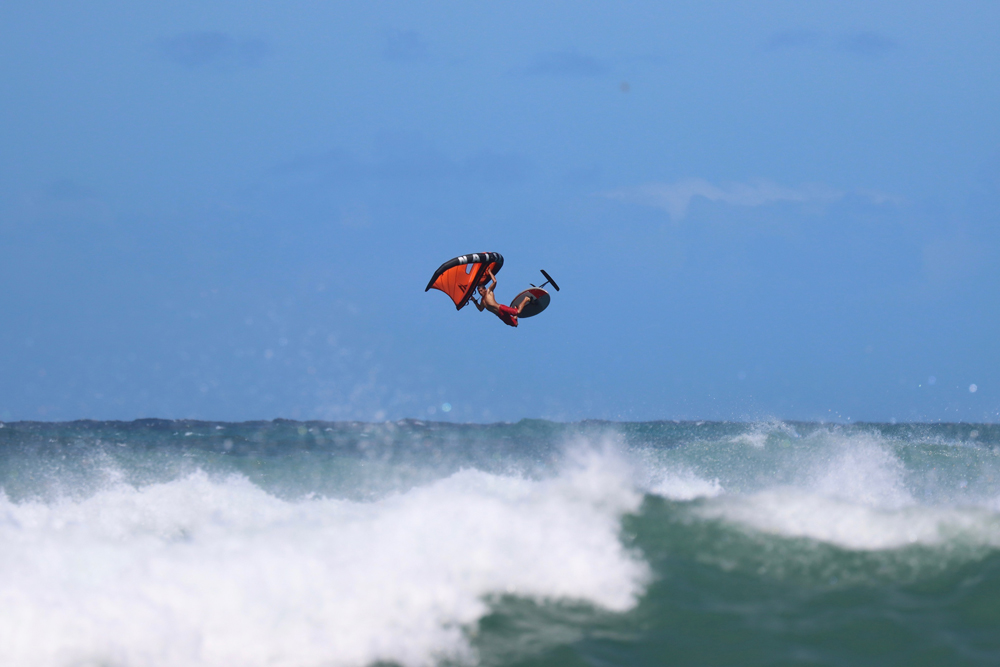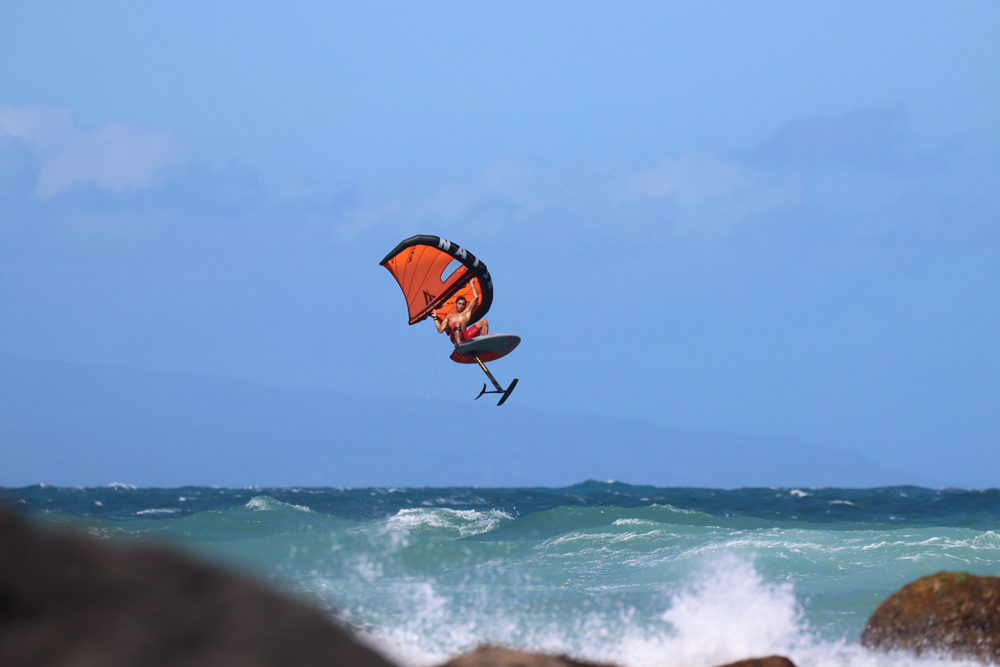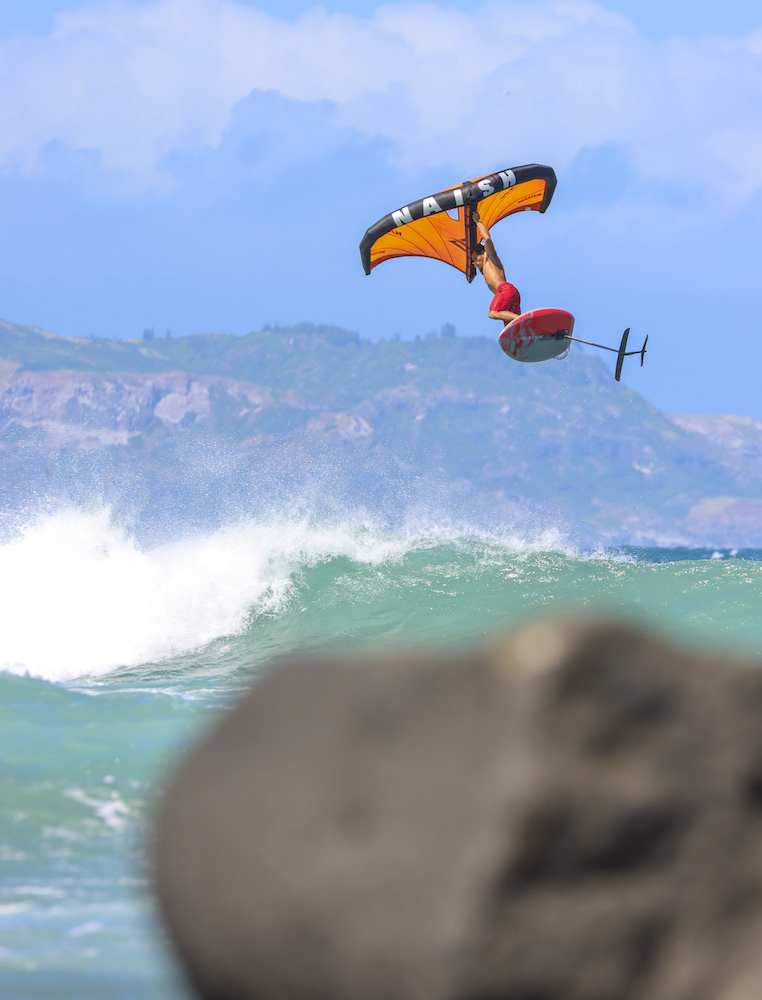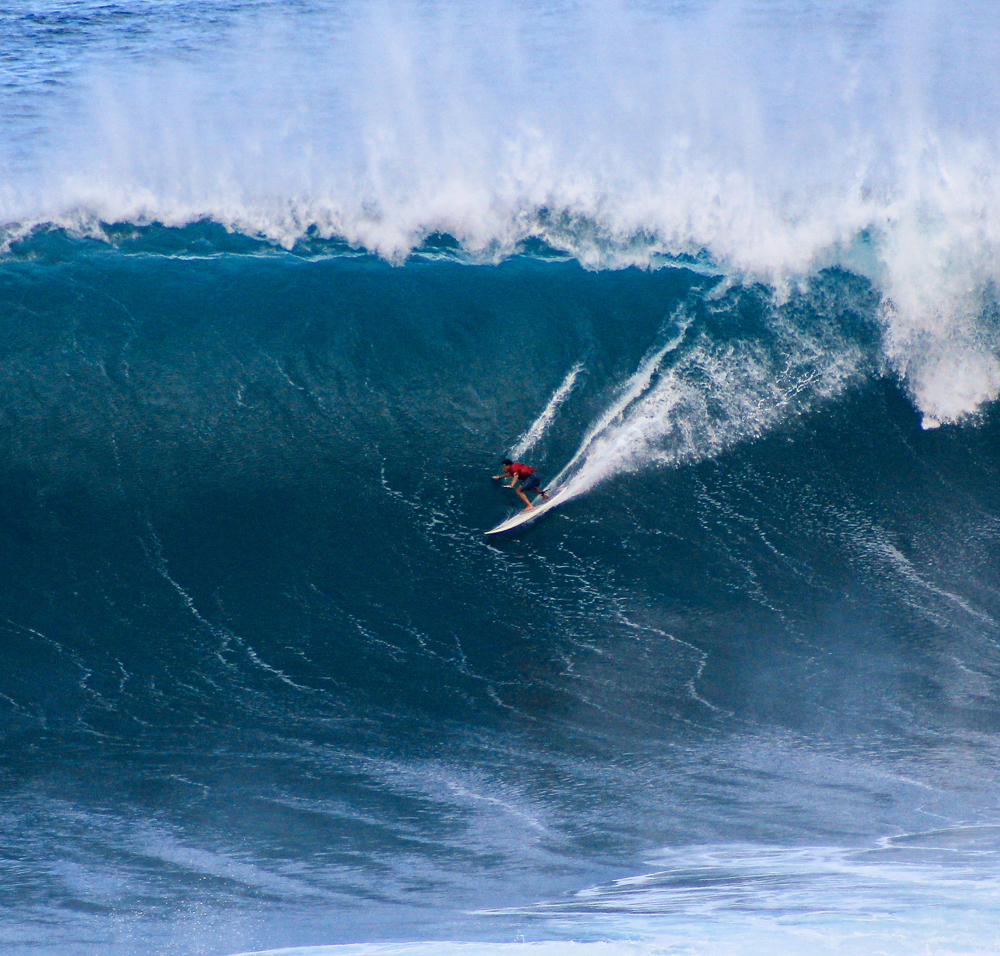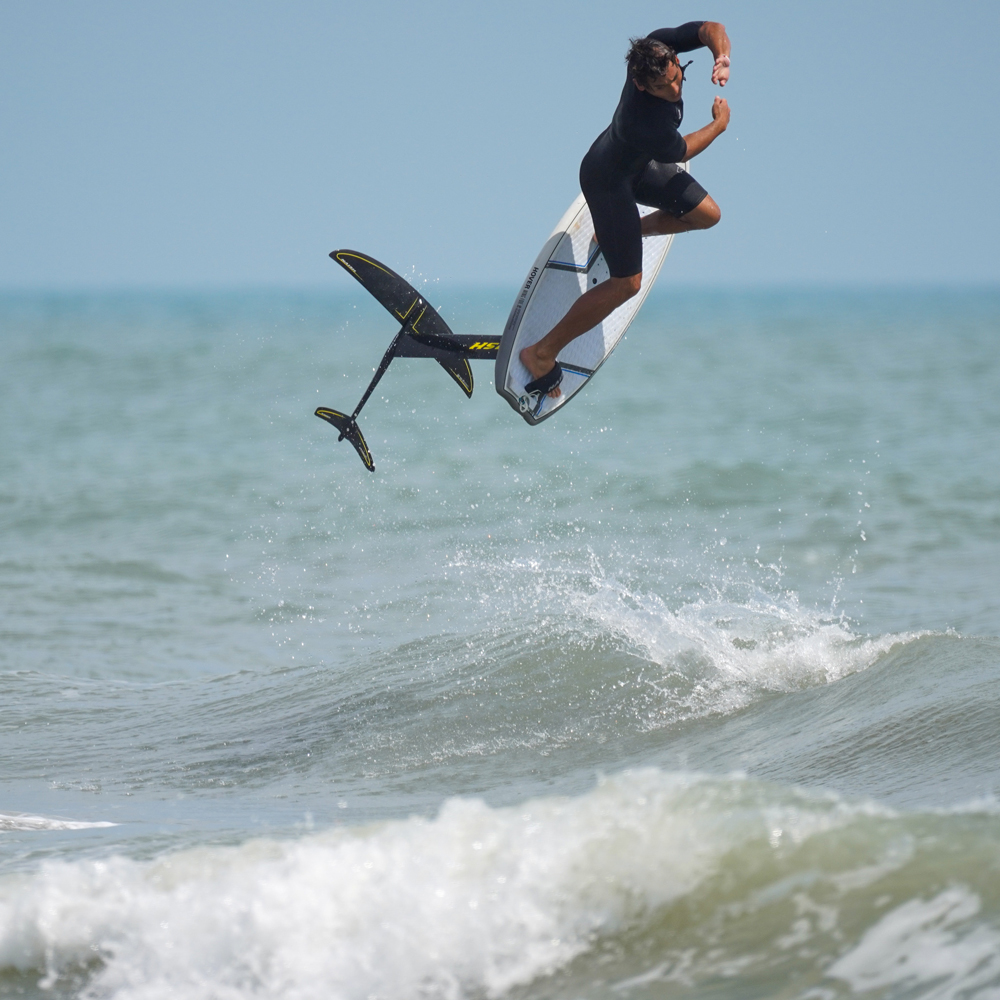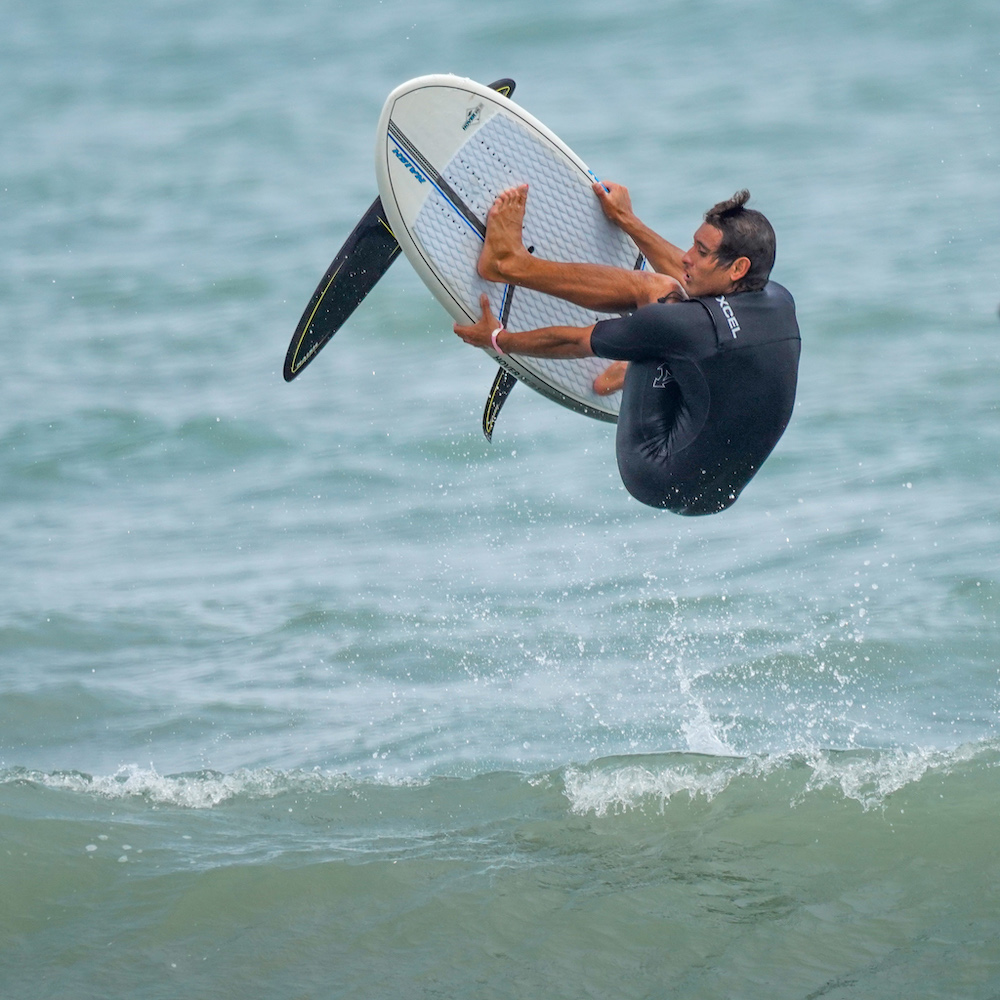There are two distinct cultures in water sports: there are surfers, and then there's everyone else. Surfing came first - it's the gold standard for the waterman and waterwoman culture. Nearly every kid who grows up near the beach (and even those that didn't) wants to learn to surf. It's in our nature. The act of riding a wave is one of the coolest pursuits for any water athlete. Couple that with the simplicity of the wave with a board and you've got a formula for a life-long passion.
After surfing came windsurfing. Hoyle Schweitzer threw a sail on an oversized longboard to create an entirely new way to get on the water. The early days of windsurfing were insanely popular - particularly for the flat water crowd. But eventually athletes found their way into the waves and a few surfers discovered how to use the wind to their advantage.
It's critically important to learn the rules of etiquette in the line up. Knowing about wave priority and how not to drop in on someone or get in the way can save you a ton of embarrassment. There's not a lot of forgiveness out in the ocean for not knowing the rules. The main area of concern is safety. Paddle boards, windsurf boards as well as foils are big. They can get tossed around in the whitewater causing everyone to take cover. The safety concerns of multiple board sizes and shapes are legitimate grievances, but beyond those, there's really no reason for a surfer to disregard anyone else in the lineup, right? Aren’t we all there to experience the ocean in our own way?
Fortunately, the ocean unites us all. In fact, all waterways have that effect. Statistics prove that the ocean covers more than 70% of the planet and many of us only come in contact with that thin slice that touches our shorelines. As big as the ocean is, the area of interest in terms of watersports and playing in the waves is actually very small. On top of that, when you consider that most of that shoreline is inaccessible or less than interesting from a wave riding perspective, the usable area gets even smaller. Therein lies the dilemma.

I wonder if there was ever a time when surfers rejoiced to see other watercraft join them in the lineup. Certainly on mellow days when the waves are small and the period is long we all enjoy a little chatter between sets. But, are new members of the tribe who are riding unfamiliar boards immediately initiated and accepted into the brotherhood? Are they coached and encouraged from the beach to get out there and give it a try? Not likely. The fact is that good waves are scarce and the popularity of surfing has been on a steep growth curve for over a decade. Unless you're a gifted phenom who picks up any board for the first time and can absolutely shred, you're going to have a challenging time getting waves.
As popular as surfing is as a base layer sport, there will always be innovation. Like the creation of the windsurfer, there have been and always will be new ways to glide across the water. Windsurfing naturally evolved into kiting which has now further evolved into winging (with help from the foil). We've seen a growing core set of surfers adopt foiling as an alternative means for riding waves especially when the surf is too small to shred on a shortboard. With each new innovation and gear upgrade, we see new ambassadors and early adopters who make "cracking the code" their newest obsession. Who are the athletes that generally jump first? The best way to gain some perspective on this question is to talk to someone who has recently lived the process of growth and innovation from an environment that produces the highest level of athletes in watersports. Someone like Austin Kalama.
Austin has always been a skilled stand up paddle surfer. He started when he was ten years old, but never had the opportunity or platform to showcase his talents. At seventeen, he became a standout in the world title trials at Sunset Beach on the APP Tour and finished the year in the top twenty competitors after competing in only a few events.
On Austin’s eighteenth birthday, he body boarded Jaws for the first time. He launched from Kahului Harbour early that morning where he ran into his dad, the legendary Dave Kalama, who was also headed out to surf the powerful breaking wave at Jaws.
"You got your board with you?," his father asked. "Yeah I've got my body board". A week later, Austin was standing on the cliff watching Jamie Mitchell and Chuck Patterson tow foiling into waves at this iconic surf break on Maui. It was then Austin decided to paddle out from the rocks on his brand new 8'10 stand up gun. On his fourth wave, it broke that board into three pieces. Austin had just experienced his first beat down at Jaws.
“Austin truly embodies the watermen lifestyle through his passion for enjoying anything in the water,” says big wave charger Chuck Patterson. “He has a humble yet competitive drive and pushes himself to find excellence in expressing his own style of riding; whether that be charging big waves at Jaws, regular surfing, paddle surfing or even on a bodyboard. Then, there is his love for foiling and wingfoiling. Austin is always looking to learn new ways to fly the friendly skies with his aerials and jumps as he dives into kiteboarding.”
"I'm a decent prone big wave surfer, but I'm three times as good on a stand up paddle board,” says the young Kalama. “I can be so much more aggressive on a SUP. I can catch all the waves I want and surf them the way I want. On my prone board I'm taking off, making the drop, setting the line, and surviving. Whereas, on my SUP, I take off deeper, am able to really knife the drops, and get aggressive with my lines. It feels really good to hold my own against some of the best big wave guys while riding my stand up paddle board."
Austin started out as a surfer, and was heavily influenced from an early age by the Maui generation ahead of him who rode everything. "I always wanted to be a pro surfer as a kid, but not in the traditional sense. Seeing my dad tow surfing, longboarding, windsurfing, and stand up paddling made me want to ride all the waves in whichever way I found the greatest fun factor."
"The traditional shortboarder on Maui is single minded and won't even look at a SUP. They use the ocean in the least efficient way possible by paddling on those small boards. My role models include my dad, Kai Lenny, Zane Schweitzer, Chuck Patterson, and Jamie Mitchell. These are the guys who ride different crafts and do it really well. The shortboard crowd was never my scene."
Being a Maui native with a taste for big waves, Austin naturally focused a lot of his attention on Jaws.
"For the first two years I got broken in at Jaws, I probably surfed it more than anyone on the island. Jaws breaks more often than most people think. It's only the hyped swells that get a lot of attention."
As stand up paddling became more and more popular on Maui, I asked Austin why more surfers didn't see the sport as an alternate means for accessing and riding more waves.
He answered, "I feel like a lot of surfers might paddle a SUP on a flat day, and I'm sure they've played around with catching waves, but the majority of them are on 10-12 foot boards that don't turn. They don't see the high performance side of the sport. I got to the point where I could surf my SUP almost as well as any of my friends on their shortboards. They would ask, 'Why don't you just ride a shortboard?' and I would say 'Cause I'm having more fun on this!’ One of the things I can say about stand up paddling is that it’s FUN.”
It can be hard to buck popular opinion, especially in those younger years when your friends are the most influential people in your life. Finding an alternate path takes tremendous self confidence and determination. If that work results in more rewarding experiences, then it's all worth it.
"I'd see the shortboarders and think 'oh that's cool.' But then I'd see other guys doing all these other sports and making each of them look so much fun. Those were the guys I looked up to."
Not a lot of people get excited to go back to the beginning in order to learn a new sport. Especially when that time takes them away from the sport where they've already invested their heart and soul. Being a beginner can be especially tough on the ego, but generally not enough to deter the curious.
"For the longest time I didn't do anything with the wind world and I feel I wasted so much time because it's always windy here on Maui. The gear was too expensive and all my friends were always roasting anyone that used the wind. I wasn't going to spend $800 to $1,000 to buy all this gear just to be made fun of!. The general consensus from all the surfers on Maui was that windsurfing wasn't cool."
Until it was.
Virtually every other watesport outside of prone surfing requires additional hardware which adds cost and complexity to an athlete’s budget. Kiting requires more than one kite for high and light wind conditions so that starts to ring the register even harder. Wing foiling requires a wing, a board, a foil, and a pump. Fortunately, your kite pump still works here. Things get even more expensive when you are considering carbon fiber on any purchase. All in, athletes are looking at a total spend north of $3K to get into a wind sport and a little over $2K for a SUP and paddle. Compared to surfing, that's a 3 to 4x increase in cost which can be a barrier for anyone interested in diversifying their water time.
"I would be hanging out with my friends at Hookipa and they were always looking at the windsurfers saying things like 'Those damn wind kooks, and wind barns'. But from what I could see, there was never any reason to call them that. Then I'd watch Kai pull a windsurfing move and think 'Well that was actually pretty sick', but still I never got into it cause I didn't have the gear."
Austin may have missed the boat during the days of the windsurfing and kite explosion, but when foiling started to emerge, he was in the right place at the right time.
"My first foil board came when my dad took an old paddle board of his and threw a foil box into it. My first couple waves on that thing were challenging, but pretty fun for the few seconds I got up and flying. I was hooked from my first few tries. I knew I wanted to get really good at this."
Not only did Austin get "good" at foiling, he changed the way people were riding the foil.
"On my 19th birthday, my dad and I split the cost on my first GoFoil from Alex Aguere (owner of GoFoil). Even though I was young, I could see the possibilities of the foil. With the speed of a foil, you could get really high if you boosted an air. After watching a video of my dad doing some smaller airs, I began launching my own and realized that progression on a foil can happen quickly. Around the same time, I started carving tighter turns and hitting the white water and being more aggressive."
Alex Aguera and GoFoil were a natural fit for Austin when he first started his foiling campaign.
"Alex picked me up to ride for GoFoil within four or five months of my beginning to ride the foil. From there, he helped me get the gear I needed to take the sport where I saw it going. I was trying to surf the foil in a way I thought it should be surfed, not the way that everyone else was surfing it."
As a younger athlete pushing the progression of foiling, Austin's riding caught the attention of his peers.
"Once my surf friends saw me riding the foil, I feel like I made the foil look exciting and fun. Before that most people were floating or just levitating on the foil and it looked pretty cool. But they weren't really riding the wave; they were just floating out on the shoulder. I was interested in pushing things a little harder."
His peers weren't the only one's taking notice and it didn't take long before other brands took an interest in this young up and comer.
"Alex Aguere was a mentor to me. Riding for GoFoil gave me my first taste of what it could look like to make a career as a pro. But after four or five years with them, nothing was really changing. The foils are awesome. Alex is awesome, but I couldn't make a career there. As much as I love GoFoil, when I received the offer from Naish, it was a chance for me to make a career out of my lifelong goal to become a professional waterman. You don't pass up something like that."
I asked him what it felt like to get the offer from Naish.
"When I got the call, I almost broke down for a second. That offer validated for me that my riding was up there with the best in the world. As a kid who'd been giving surf lessons and doing other odd jobs to support my passion for the last four years, all that work finally paid off. Now, with the offer from Naish, my passion is able to support me."
Kalama is friendly with pro Naish kiter, Peri Roberts from Australia. The two met in Hood River Oregon a few years ago and have been traveling and shooting together ever since.
"I'm just glad that now I have this platform Naish has given me to get out there and become a part of these bigger things. I'm excited about that."
“I am truly stoked to welcome Austin Kalama to the Naish team family,” says Chuck Patterson.
“After having spent so many years traveling and sharing some magical sessions with his father who is one of my favorite humble heroes, I find it uncanny how similar they both are.”
Having adopted foiling and stand up foiling into his game, Kalama is now an influencer himself modeling different ways to get on the water.
"I feel like nowadays, kids are a lot more open minded. It's hard to say what caused that, but there's a lot more crossover between sports now. There are more influencers and role models like Kai Lenny who can ride anything so more kids think riding anything is cool. Or even Ben Gravy. Little kids see him riding a soft top surfboard and they realize you don't have to ride a shortboard in order to have fun."
Foiling has become the springboard for the fastest growing watersport today. The user friendliness of the wing and the efficiency of the foil are almost too tempting to overlook.
"I think the foil really interested a lot of people. From there, it was easy for manufacturers to add the wing. It's not easy to go from a shortboard to a windsurfer, but if you can foil and hold onto a bar, you can learn to wing pretty quickly. There isn't much of a learning curve because the wing is so easy once you’ve got the foil dialed in."
Some of Austin's influence to ride any type of board can certainly be attributed to his father, but Dave never put a lot of pressure on him. The biggest challenge for this surf prodigy is building an identity outside of his father's legacy as Dave Kalama is - arguably - one of the top watermen to have ever lived.
"I remember when I was fifteen, I was just getting into bigger surf. It was myself, my dad and Kai Lenny out at Jaws. We were waiting for a set when a big 20-footer popped up. As I was paddling over it, I watched my dad turn around halfway up the face, take two big strokes and take off on it. That's why I’ve looked up to him for so long - I still do. Those sessions were so special back then. Watching my dad surf waves like that made me realize that's how I want to surf when I get older. Now I'm at the point where if that scenario happens again, I'll be the one turning and going."
As Austin showed more interest in competing with the notion of possibly turning pro, Dave Kalama naturally started to do some coaching but always put their father-son relationship first.
"Some kids' parents will push like crazy so that by the time their kids are ten they already have four or five sponsors. My dad pushed my limits, but he never forced me to go train or practice. We both understand that if you're riding just to be the best, then it’s not fun anymore. I always want him to be my dad first and my coach second, because sometimes you get mad at your coach."
Austin is showing that raw talent is a necessary ingredient for sponsorship, but over and above the importance of natural ability is the elusive fun factor. Keeping things fun can be a secret weapon that other athletes overlook.
"I don't know if I'd say I've had a lot of early success. More than anything I've had so much fun these past few years traveling and having a good time whether I'm on a surf trip, stand up paddle trip, foil trip, or wing foiling. I'm lucky that I've been able to have so much fun doing what I love."
Loving what you do keeps you humble and humility is something Austin has in spades.
"I don't think I'm on that level yet where I'd call myself a 'pro pro'. I'm just beginning. I feel like I've just taken my first steps into the industry."
Growing up in the shadow of a father like Dave Kalama’s legacy and taking steps that resemble his path make it even harder to be recognized for your own skills rather than your name.
"For so long, I was known as Dave Kalama's son, Austin. Not pro foiler or winger, Austin Kalama. I had to make my own name to be taken seriously. 'Oh you're Dave's son so you SUP because he did.' Once I took charge in my foiling and surpassed him in skills, I started making my own name for myself because I wasn't just Dave's son, I was moving into my own lane."
"They're not wrong, I see why they refer to me that way, but I'm looking forward to the day when I hear 'This is professional waterman, Austin Kalama.'"

